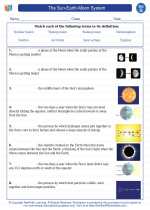The Sun-Earth-Moon System
The Sun-Earth-Moon system consists of the Sun, the Earth, and the Moon, and the interactions between them. Understanding this system is important in studying various natural phenomena such as eclipses, tides, and seasons.
The Sun
The Sun is a massive, luminous sphere of hot plasma that is the central body of the solar system. It provides the Earth with light and heat, making life on our planet possible. The Sun also exerts gravitational forces that keep the Earth and other planets in their orbits.
The Earth
The Earth is the third planet from the Sun and the only known astronomical object to harbor life. It is the largest and densest of the inner planets and has a diverse range of surface features, including oceans, continents, and an atmosphere that supports life.
The Moon
The Moon is Earth's only natural satellite. It orbits the Earth and is responsible for the natural satellite phenomena such as tides. The Moon's phases are also a result of its position relative to the Earth and the Sun. These phases include new moon, first quarter, full moon, and last quarter.
Interactions within the System
The interactions within the Sun-Earth-Moon system give rise to various phenomena:
- Eclipses: Solar eclipses occur when the Moon passes between the Sun and the Earth, blocking the Sun's light. Lunar eclipses occur when the Earth passes between the Sun and the Moon, casting a shadow on the Moon.
- Tides: The gravitational pull of the Moon and the Sun causes the ocean tides on Earth. The gravitational force of the Moon leads to the formation of two high tides and two low tides each day.
- Seasons: The tilt of the Earth's axis as it orbits the Sun causes the change in seasons. This tilt results in variations in the amount of sunlight different parts of the Earth receive at different times of the year.
Study Guide
To understand the Sun-Earth-Moon system, consider the following topics:
- Characteristics of the Sun, including its composition, structure, and importance to the solar system.
- Earth's position in the solar system, its atmosphere, and the factors that make it habitable for life.
- Properties and movements of the Moon, including its phases, orbit, and gravitational effects on Earth.
- Interactions and phenomena within the system, such as eclipses, tides, and seasons, and the scientific principles that govern these phenomena.
Studying the Sun-Earth-Moon system provides insights into the interconnectedness of celestial bodies and the natural phenomena that affect life on Earth.
.◂Science Worksheets and Study Guides Seventh Grade. The Sun-Earth-Moon System
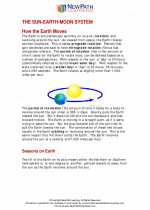
 Worksheet/Answer key
Worksheet/Answer key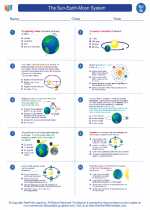
 Worksheet/Answer key
Worksheet/Answer key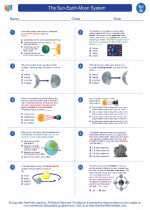
 Worksheet/Answer key
Worksheet/Answer key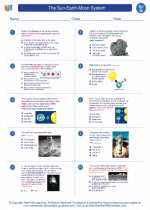
 Worksheet/Answer key
Worksheet/Answer key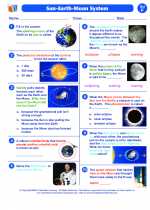
 Vocabulary/Answer key
Vocabulary/Answer key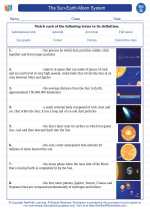
 Vocabulary/Answer key
Vocabulary/Answer key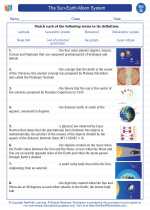
 Vocabulary/Answer key
Vocabulary/Answer key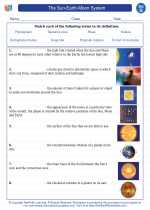
 Vocabulary/Answer key
Vocabulary/Answer key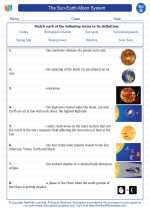
 Vocabulary/Answer key
Vocabulary/Answer key